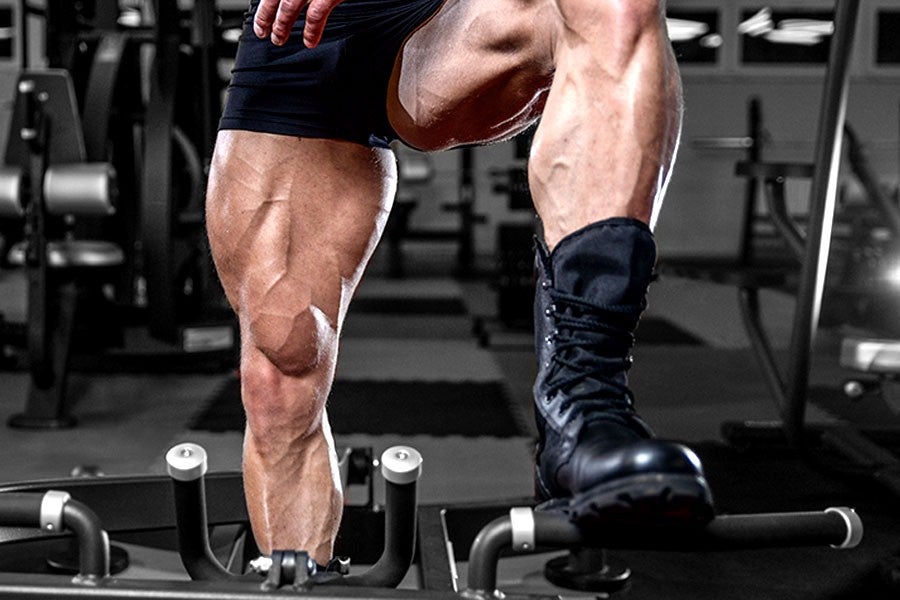If you’ve been to a gym lately, you might have happened on the curious image of a Serious Weightlifting Bro pumping iron in… wait, are those… Chuck Taylors?
It’s an incongruous image — a meathead wearing the quintessential hipster shoe. Or perhaps you’ve seen something even stranger: A similarly bulky dude wearing those off-putting toe shoes. Or even crazier, a huffing, purple-faced amateur bodybuilder hitting the squat rack with — holy god — no shoes on at all.
Gym bros it seems are in the midst of a footwear crisis, risking injury, embarrassment and (worse) disappointing gains due to an uninformed fashion choice. It’s no surprise when the available guidance on online weightlifting forums is so muttonheaded: I’ll point you to this canonical piece of web content in which a bunch of gym bros argued for days about how many gosh-dang days there are in a week.
So what kind of shoes are most appropriate for lifting weights? To clear through the muck, I asked Jeff Jalaba, a certified personal trainer in L.A. and one its resident fitness experts, for answers.
What’s the Converse Trend All About—and Is It Safe?
Believe it or not, Chucks are actually a pretty good option for weightlifting, Jalaba says. The gist of it is that most of the foundational powerlifting exercises — specifically, deadlifting and squatting, in this case — demand that a person keep their weight back and push through their heel.
This, of course, is difficult. Few people have the hip mobility and/or strength in their core to execute these lifts with proper technique, and thus, they tend to compensate by pitching forward, and putting their weight on their toes and balls of their feet.
Chuck Taylors have perfectly flat soles, however, and this promotes proper lifting technique. “Chuck Taylors are really popular [among lifters] because they’re one of the few shoes that don’t have a raised heel,” Jalaba explains. Without the heel raise, your weight is more naturally on your heels, making you less inclined to lean forward and cheat on your lifts. Wearing Chucks is a way to reinforce good habits, essentially.
So What’s with the Thick-Heeled Lifting Shoes?
The temptation to list forward while squatting and deadlifting is due to insufficiently flexible hips and knees, Jalaba explains. But rather than lace up a pair of Chucks and force themselves to learn proper technique, people often take a shortcut and buy Olympic lifting shoes with thick heels.
“It’s basically ‘cheating,’” Jalaba says. “The main reason people use Olympic lifting shoes with a high heel is to make up for their hips not being stable. They use it to maximize their performance instead of fixing their deficiencies.”
An Olympic-shoe proponent might argue that if they’re good enough for the pros, they’re good enough for the average gym-goer. But that’s a false equivalency. High-heeled shoes, lifting belts, wrist guards, knee sleeves and other accoutrements make sense in weightlifting competitions, where every pound counts.
But the average person isn’t a competitive weightlifter. Most people would be better served taking some weight off the bar, strapping on some flat-soled shoes and executing lifts with perfect technique. Jalaba uses the phrase “regress to progress.” “It’s not the sexiest answer, but you have to back and rebuild your strength from the foundation up,” Jalaba says. “Olympic shoes are for good for if you want to just hit a high weight and cheat your way there.”
In short, thick heels are for people interested in vanity metrics, while flat soles are for people interested in building true strength.
Barefoot Lifting Is Still a Terrible Idea for Most People
People who lift barefoot have taken the flat-sole method to its utmost extreme. It’s a good idea, but not for everyone, especially if you’re the type who likes to dabble in other workout methods, such as interval training or outdoor running.
For those people, Jalaba suggests shoes such as the New Balance Minimus or the Vivo Barefoot line of exercise footwear.
Whatever you do, though, just don’t be a guy who wears orthotic heels and then has the audacity to brag about squatting three plates.
